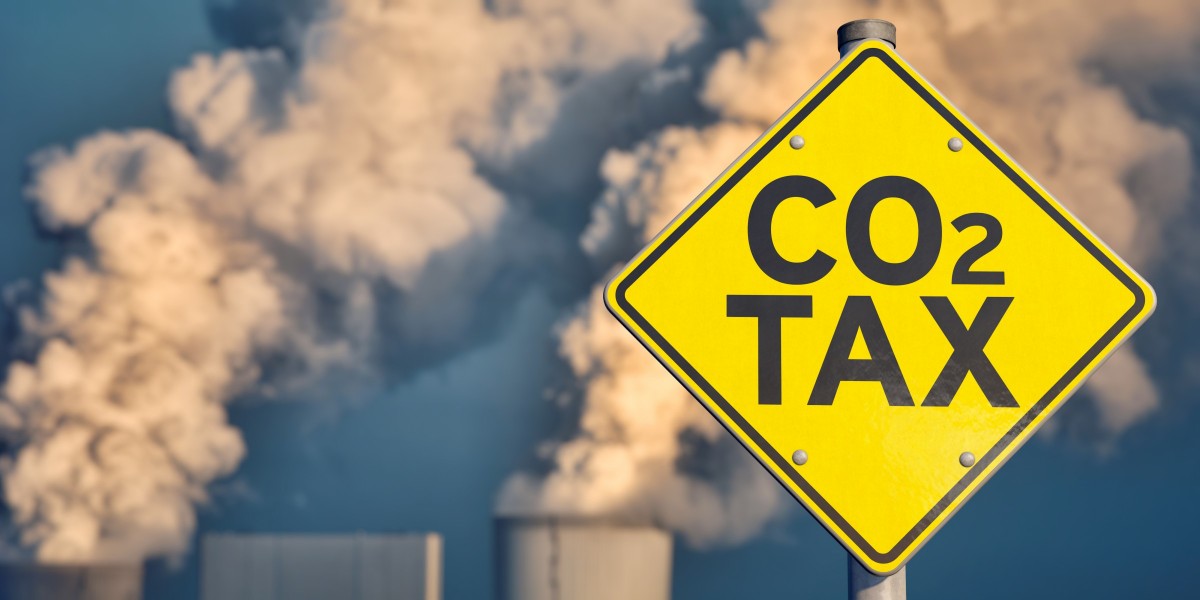EU Reaches Deal On World’s First Carbon Border Tax
EU policymakers have provisionally agreed this week to introduce the world’s first carbon border tax in a push to encourage cleaner industrial production globally and protect its domestic industry. Under the new agreement, goods imported into the EU from a high-polluting country will face a levy at the border based on its emissions footprint.

Carbon border tax to shield EU industry during green shift
The carbon border adjustment mechanism (CBAM) is designed to protect against “carbon leakage” – the risk that EU companies could move carbon-intensive production abroad to countries where less stringent climate policies are in place, or when EU products are replaced by more carbon-intensive products.
The CBAM will initially apply to imports whose production is carbon intensive and at the most significant risk of “carbon leakage” including iron and steel, cement, aluminium, fertilisers and electricity as well as hydrogen, which is mainly produced from coal in non-EU countries. Some manufactured products, including screws and bolts, will also be included in the deal. Cars could also be included following a trial period starting next October.
The EU said that the sectors in scope cover between 55% and 60% of the bloc’s industrial emissions.
Any companies importing these into the EU will have to buy certificates to cover the carbon emissions embedded in them unless they can prove they have already been accounted for by climate legislation in the producer country. The profits will largely go into the EU’s budget. The European Commission predicts that CBAM could produce 500-800 million euros of tax revenues for the EU from 2023-30.
Currently, EU companies in those sectors receive a certain number of free greenhouse gas allowances under the EU’s emissions trading scheme (ETS) and must then pay for permits to cover any additional greenhouse gases they emit. These free allowances will start to be phased out after October.
EU governments are increasingly worried about potential de-industrialisation in Europe as soaring energy prices have squeezed producers’ margins and are forcing companies to cut production.
Energy-intensive metals have been particularly affected. In Europe, production cuts for aluminium, the most energy-intensive metal to produce, account for around 1.4 million tonnes of capacity.
The message to our industries is clear: there is no need to relocate because we have taken the necessary measures to avoid unfair competition and carbon leakage.European Parliament’s environment committee Pascal Canfin
EU carbon tax could raise import prices, increase global trade tensions
CBAM would mean that imports of certain goods would be subject to taxes that would raise the price of these goods, creating a level playing field between countries, which factor in carbon pricing and those that do not.
In general, countries with big fossil fuel consumption and export-focused heavy industries, including China, Australia, Turkey and India, would be the most affected.
The US and China could be particularly affected with the two countries leading the world in carbon emissions.
Russia faces its own sanctions in response to its aggression in Ukraine but could also be targeted by CBAM.
There is a possibility the countries affected would challenge the policy at the World Trade Organization and could retaliate with their own tariffs against EU exports. The EU’s key trading partners, including the US and emerging economies in Asia, have already expressed concerns that the new rules would further complicate trade and raise export costs for non-EU manufacturers.
(Click on image to enlarge)
Source: IEA
Next steps
Under the provisional and conditional agreement, the new levy will be launched on 1 October 2023 for a test period that imposes only reporting obligations on the imports of goods covered by the scheme, without making any financial payments or adjustments. The end of the test phase is yet to be decided and will be discussed in further negotiations at the end of the week.
The European Commission will carry out a review by 2026 to decide whether to further expand the scope, including downstream products.
To avoid double protection of EU industries, the length of the transition period and a full phase-in of the CBAM will be linked to the phasing out of the free allowances under the ETS.
The phase-out of free EU ETS allowances is currently being negotiated in a separate trialogue between the European Parliament, the Council and the European Commission.
The agreement now needs to be confirmed by ambassadors of EU member states and the European Parliament and then adopted by both institutions before becoming final.
CBAM is part of the “Fit for 55 in 2030 package", which is the EU’s plan to reduce greenhouse gas emissions by at least 55% by 2030 compared to 1990 levels in line with the European Climate Law.
The CBAM announcement came a day after the leaders of the G7 countries announced plans to establish a “climate club” to strengthen international cooperation on climate change mitigation. The “climate club” aims to support increasingly ambitious plans to achieve global net zero greenhouse gas emissions by or around mid-century.
More By This Author:
Poland’s Current Account Balance Improves Due To Seasonally Higher EU Transfers
Japan’s Non-Manufacturing Sector To Lead Recovery In Near Term
Eurozone Industrial Production Off To Poor Start In Fourth Quarter
Disclaimer: This publication has been prepared by ING solely for information purposes irrespective of a particular user's means, financial situation or investment objectives. The information ...
more


